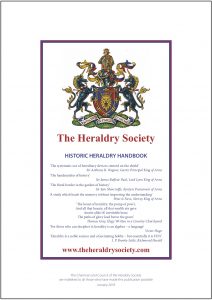Although I generally ignore the heraldic practices of modern aristocratic families, I was struck by the below achievement, which was designed by the Garter King of Arms in 1969 upon the investiture of Charles Windsor as the Prince of Wales, as it does a nice job of incorporating both the subject’s primary arms as well as their badges and other arms to which they were entitled.


